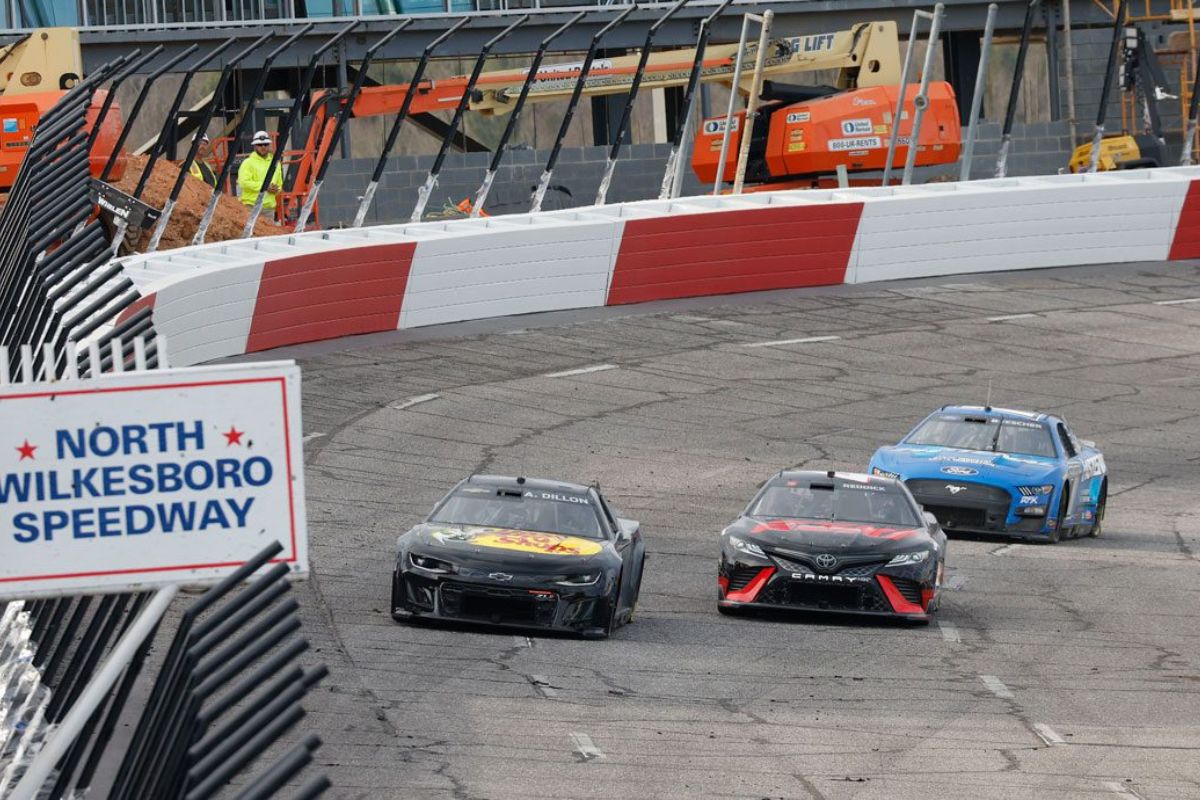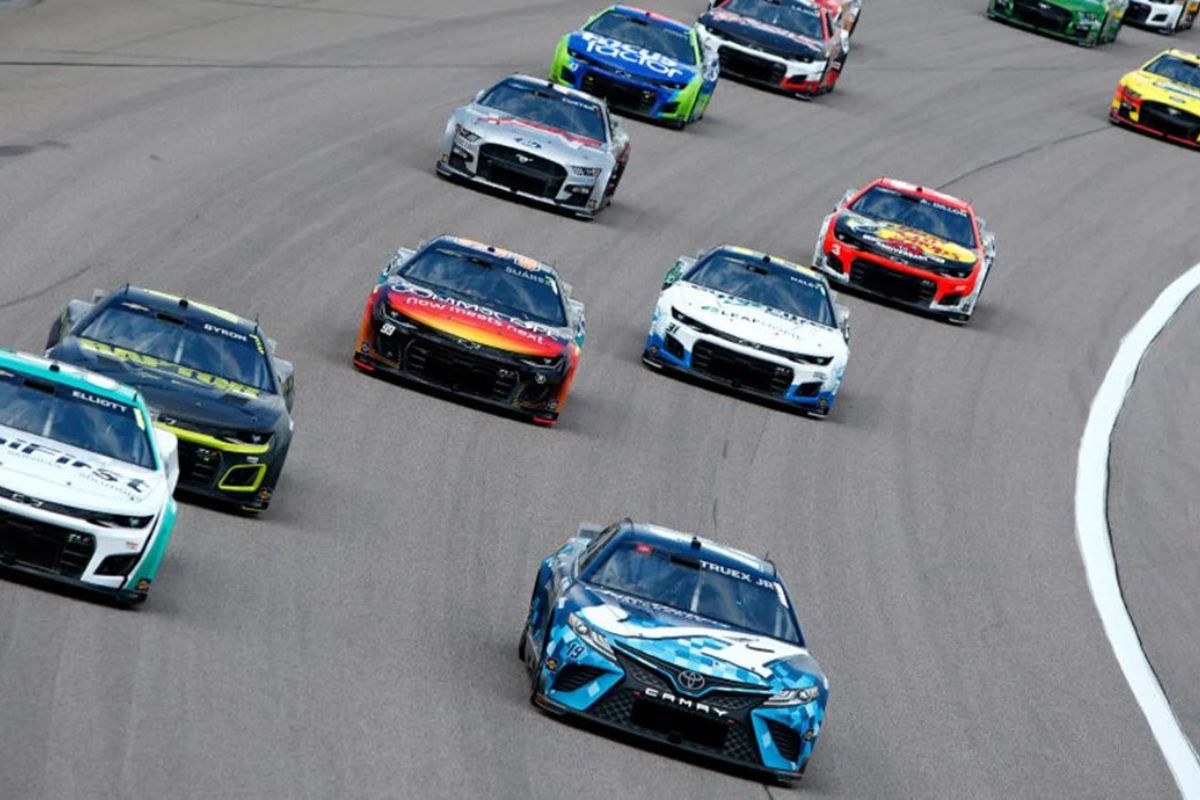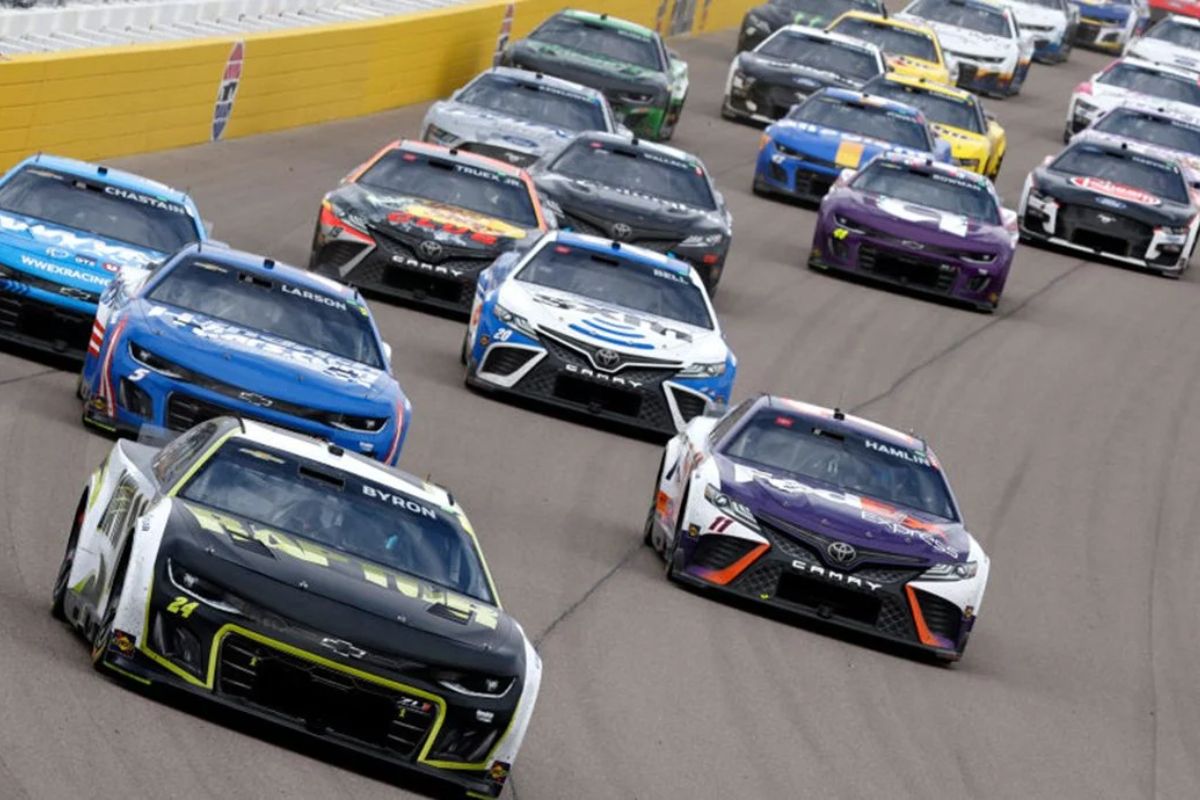Goodyear’s North Wilkesboro Warning: As Goodyear introduces a new array of tire compounds for the NASCAR All-Star Race at North Wilkesboro Speedway, Cup teams are facing an extraordinary challenge. The various tire options, tailored to improve performance on the historic track, necessitate a strategic reevaluation concerning tire wear and race tactics. Team strategists and engineers are currently in a rigorous assessment phase, analyzing data and previous performances to forecast the implications of each tire choice on the demanding surface of North Wilkesboro. This tricky situation not only challenges the teams to adjust but also gives them a chance to come up with new ideas for race plans.
Key Takeaways
- Goodyear warns about the rapid wear of softer tire compounds at North Wilkesboro Speedway.
- Teams are concerned about balancing speed with tire durability during the race.
- The unique track conditions at North Wilkesboro intensify tire management challenges.
- Goodyear advises teams to adapt their strategies considering unpredictable tire behavior.
- Pit crew efficiency and precise timing of tire changes are crucial to race success.
Innovative Tire Strategy for NASCAR All-Star Race
The NASCAR All-Star Race at North Wilkesboro Speedway introduces a creative tire strategy, incorporating diverse compounds—soft, medium, and hard—to enrich race dynamics and strategy. This nuanced approach, drawing from the successful high-wear tire event at Bristol, is set to redefine competitive parameters and decision-making processes among teams. The strategic complexity introduced by this variety allows teams to tailor their race tactics more precisely to the evolving track conditions and their drivers’ styles.
The selection of soft, medium, and hard tires extends beyond mere physical properties; it encompasses a broader tactical spectrum. Soft tires, while offering superior grip and speed on shorter runs, degrade quicker, necessitating more frequent pit stops. Medium tires strike a balance, offering reasonable durability without significant compromise on speed, suitable for mid-distance stints. Hard tires, the most durable, will likely be favored for long runs, especially in stages where extended green-flag periods are anticipated.
Teams must now engage in deeper analysis pre-race and dynamic adjustment during the event. The tire choice at each stage will not only reflect the immediate tactical situation but also anticipate subsequent conditions and competitor actions. This requires teams to develop and adapt their predictive models, integrating tire performance data with real-time race dynamics.
Goodyear Director’s Insights on Option Tires
In an insightful discussion with SiriusXM NASCAR, Greg Stucker, Goodyear’s director, elaborated on the distinct strategy of using option tires in the upcoming All-Star Race, highlighting the critical balance between speed and durability. Stucker emphasized that the softer tire compounds, while providing a notable increase in speed, also face quicker deterioration. This dynamic introduces a strategic layer to tire management that teams must navigate to optimize their performance during the race.
- Speed Enhancement: The softer compound tires are designed to significantly increase speed, which can be a vital advantage in the high-stakes racing of the All-Star Race.
- Durability Concerns: These tires, while fast, also wear out more rapidly than standard compounds, necessitating very strategic use during the race.
- Strategic Deployment: Deciding the best time to deploy these tires during the race becomes a critical decision, balancing the benefits of speed against the risk of premature wear.
- Experimentation and Adaptation: Teams are encouraged to experiment with these tires during practice sessions to fully understand their behavior under race conditions.
- Management Skills: Effective tire management, predicting wear patterns, and adapting race strategies in real-time are crucial skills that teams need to develop to utilize the full potential of option tires.
“The other thing I think, is to be determined at North Wilkesboro is the wet weather compound. Is that really the best option? I think it’s something we’ve evaluated, something we can go to quickly for the All-Star race. But, it may not be the best choice for an option tire. But this weekend in North Wilkesboro will give some direction on what we would want to do, if we were to change that, and be prepared for the next call round of the option tire. If NASCAR and we, so chose to do that.” – Greg
Greg thinks Richmond Raceway could work, but he’s not totally sure. They tested there before and practiced on wet tires, which could help. Elton Sawyer, NASCAR’s VP, said tire management is crucial because tires won’t last long.
Tactical Challenges for Teams
Facing the strategic challenges of the All-Star Race, each team must judiciously manage their allocation of two sets of ‘option tires’ and two sets of ‘prime tires’ to optimize performance and endurance. The strategic deployment of these tires becomes a pivotal factor in the race’s outcome, demanding high-level decision-making from the pit crews and strategists. The option tires, while offering a significant speed advantage due to their softer compound, suffer from quicker degradation, forcing teams to carefully consider their use during critical segments of the race.
The prime tires, on the other hand, provide more durability but at the cost of raw speed. This contrast places teams in a complex balancing act—weighing the benefits of immediate speed against the long-term advantage of tire endurance. The decision on when to deploy each set can very well be the difference between winning and merely finishing.
Teams must also consider track conditions, weather changes, and race dynamics, which can all influence tire performance. The ability to adapt to these factors, while still managing tire usage efficiently, showcases the depth of strategy involved in motorsports. This level of tactical planning is what separates top-tier teams from the rest, as they not only react to the conditions of the race but anticipate changes and adjust their strategy accordingly. This decision-making under pressure is what makes the All-Star Race a challenge and a spectacle.
Driver Perspectives on Tire Wear Strategy
Tire strategy is crucial, especially in big races like the NASCAR All-Star Race. Softer tires make cars faster but wear out quicker, so teams have to balance speed with tire life. Timing pit stops right for tire changes can give teams an advantage, but mistakes could cost them track positions.
Kevin Harvick raised the question: tire wear or horsepower? Martin Truex Jr chose tire wear, considering NASCAR’s strict power rules. He said if they manage tire wear well, they could run 60 laps without problems. After winning at Bristol, Denny Hamlin shared his thoughts on finding the right balance for tire wear in the upcoming races.
“You want to have certain aspects where you can go 100 percent. I agree; at max, it was like 90 percent on any given lap. But again the teams could make adjustments; if nothing changes. We can go back to same tire, same conditions. I have full faith the teams would fix most of the problem.” – Hamlin
Tire wear strategy is a critical component of racing tactics, where even slight miscalculations can lead to significant performance degradation or, worse, tire failure. Truex and Hamlin have developed their approaches based on extensive track data and personal experiences, which help them predict and react to how tires degrade during a race.
Impacts and Considerations for Racing
The introduction of NASCAR Overtime Rules adds complexity. Teams now must anticipate not just the scheduled laps but also potential extra laps, which could demand more from the tires than initially planned. This scenario requires teams to have a robust strategy that includes contingencies for unexpected developments during the race.
The balance between speed and caution in pit stops, and the precision in predicting tire behavior, can significantly influence the race’s outcome. Teams that master this balance often find themselves in better positions to capitalize on the critical final laps, where races are frequently won or lost.
News in Brief: Goodyear’s North Wilkesboro Warning
Goodyear’s introduction of diverse tire compounds at North Wilkesboro Speedway represents a significant strategic evolution in NASCAR racing. Teams must now adeptly balance speed with tire durability, a challenge compounded by the demanding track conditions.
Strategic pit stops and tire management will be essential in leveraging competitive advantages. This development not only enriches the complexity of race strategies but also intensifies the demands on drivers’ skills and teams’ adaptability in motorsports.
Our Reader’s Queries
Q. Why was North Wilkesboro Speedway closed?
A. North Wilkesboro Speedway, a 0.625-mile dirt oval track, reopened briefly in 2010 for a series of races but has since remained inactive. Originally owned by NASCAR, the speedway was relinquished when NASCAR shifted its focus to other circuits.
Q. What NASCAR race was in 1996 at North Wilkesboro?
A. The 1996 Tyson Holly Farms 400 marked the twenty-seventh event of the 1996 NASCAR Winston Cup Series. Taking place on September 29, 1996, at North Wilkesboro Speedway in Wilkes County, North Carolina, the race spanned 400 laps. Jeff Gordon, driving for Hendrick Motorsports, clinched victory after starting from the second position.
Q. Who owns the North Wilkesboro track?
A. In 2007, Speedway Motorsports gained full ownership of the track, marking precisely 60 years since its inaugural race on May 18, 1947—almost a year prior to NASCAR’s establishment. Today, commemorates the track’s 76th anniversary.
Q. Who bought North Wilkesboro?
A. As NASCAR aimed to expand westward and northward, some of its oldest tracks faced closure. Speedway Motorsports’ then-CEO, Bruton Smith, acquired a portion of North Wilkesboro Speedway in 1995, while the remaining portion was purchased by Bob Bahre.
ALSO READ: North Wilkesboro Resurfaced: Drivers Stunned by Drastic Changes



